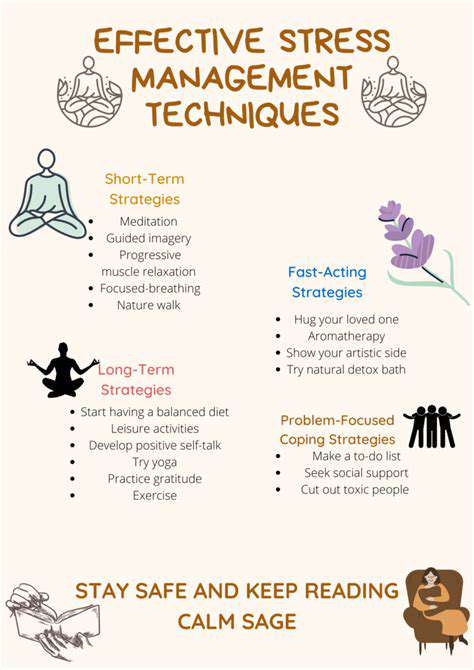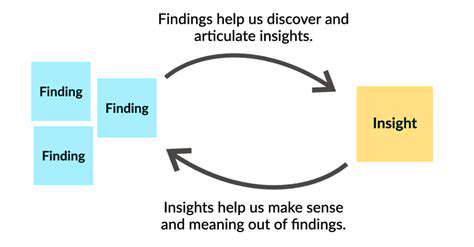Tension Headaches: Causes, Symptoms, and Effective Relief Strategies
What Causes Tension Headaches?
Physical Factors Contributing to Tension Headaches
Tension headaches often emerge from physical factors such as muscle tension and poor posture. When the muscles in the neck and scalp become tight, they can lead to pain that radiates across the head. This discomfort typically results from prolonged periods of activities that require remaining in one position, such as desk work or even driving.
Additionally, strain on the neck muscles due to incorrect posture can exacerbate the issue. With the advent of technology, many individuals find themselves hunched over screens, which places additional stress on the cervical spine. Over time, this sustained tension can manifest as tension headaches, creating a vicious cycle of pain and discomfort.
Emotional and Psychological Triggers
Emotional factors play a significant role in the onset of tension headaches. Stress, anxiety, and depression are common contributors that can lead to muscle tension, particularly in the face and neck region. When an individual experiences high levels of emotional stress, their body responds by tightening muscle groups, which can trigger headache symptoms.
Furthermore, the relationship between stress and tension headaches can often be cyclical; as headaches occur, they may increase stress levels, leading to even more tension. Effectively managing emotional wellbeing through relaxation techniques or therapy can therefore be crucial in breaking this cycle and alleviating the frequency and severity of tension headaches.
Lifestyle Choices and Their Impact
Certain lifestyle choices significantly influence the likelihood of experiencing tension headaches. Inadequate sleep, poor nutrition, and lack of physical activity can all act as contributing factors. Quality sleep is essential for overall health, and disruptions or shortages can lead to increased susceptibility to headaches as fatigue mounts.
Moreover, dietary habits can also affect headache frequency. Skipping meals or consuming high levels of caffeine and processed foods may trigger headaches in vulnerable individuals. Cultivating a balanced diet and incorporating regular exercise can help mitigate these risks and enhance overall wellbeing, reducing the chances of developing tension headaches.
Environmental Factors That Might Trigger Headaches
The environment can greatly affect the prevalence of tension headaches. Factors such as excessive noise, bright lights, or even strong odors can provoke a headache in some individuals, particularly those with heightened sensitivities. An environment that lacks proper ergonomics, like unsuitable office equipment, can also contribute significantly to muscle tension.
In addition, temperature variations and weather changes have been documented to influence headache occurrences. Cold drafts or overly warm settings may cause discomfort that further leads to tension headaches. By creating a more conducive environment—free from irritants and discomfort—individuals can take proactive steps toward reducing the chances of tension headache development.
Identifying the Symptoms

Common Physical Symptoms
Tension headaches are often characterized by a dull, aching sensation that typically envelops the entire head. Many individuals experience discomfort that can intensify throughout the day, making it difficult to concentrate on tasks. This tightness can feel like a band of pressure around the forehead and temples. Some people may also report a sense of heaviness during these episodes.
In addition to the pressure-like pain, there may be associated physical symptoms such as sensitivity to light and noise. People suffering from tension headaches often find that bright lights and loud sounds exacerbate their discomfort, compelling them to retreat to a dark, quiet space. This sensitivity can further hinder daily activities, as those affected may feel overwhelmed by their environment.
Muscle tightness in the neck and shoulders is another common symptom that accompanies tension headaches. This tension can develop from stress, poor posture, or prolonged periods of inactivity, resulting in a vicious cycle of pain and discomfort. Regular stretching and relaxation techniques can be beneficial in alleviating these symptoms.
Mental and Emotional Health Indicators
Many individuals with tension headaches also face mental and emotional challenges, such as irritability or difficulty focusing. These headaches do not just impact physical health; they can also lead to feelings of frustration and anxiety. It is essential to address these emotional aspects, as they can contribute to the headache cycle.
Stress management is a crucial component of effective tension headache treatment. Individuals experiencing ongoing headaches should consider implementing relaxation techniques, mindfulness exercises, and other stress-reducing activities. This can lead to a positive feedback loop, breaking the cycle of stress and pain.
In some cases, the frequency and intensity of tension headaches can indicate the presence of underlying mental health issues, such as anxiety or depression. Addressing these mental health aspects is vital for achieving long-term relief and improving overall well-being. Seeking professional help can provide valuable insights and coping strategies.
Recognition of Associated Symptoms
As tension headaches progress, they may sometimes be accompanied by additional symptoms, such as fatigue and difficulty sleeping. These associated symptoms can further complicate the situation, leading individuals to feel drained and unable to function effectively throughout the day. Understanding the full scope of symptoms is crucial for proper diagnosis and treatment.
Another notable symptom may involve appetite changes or gastrointestinal disturbances. Tension headaches can lead some individuals to experience nausea or a decreased desire to eat. This can create further fatigue and issues in managing overall health, emphasizing the importance of maintaining a balanced lifestyle.
Moreover, those with chronic tension headaches may find themselves in a state of constant alertness, due to the ongoing discomfort. This can lead to increased tension in the body, further perpetuating the cycle of pain. Recognizing these symptoms and seeking timely intervention can significantly improve quality of life.
Effective Relief Strategies

Understanding the Different Types of Tension Headaches
Tension headaches are classified into two main types: episodic and chronic. Episodic tension headaches occur less than 15 days a month and may last from 30 minutes to several days, while chronic tension headaches occur more frequently. Individuals suffering from chronic tension headaches can experience discomfort for 15 or more days each month, significantly impacting their overall quality of life. Understanding these categories is essential, as it informs potential treatment approaches that can be tailored to individual needs.
The symptoms that accompany tension headaches can vary widely from one person to another. Common signs include a constant dull ache, feelings of tightness or pressure across the forehead, and tenderness around the scalp and neck. Recognizing these symptoms early is crucial for effective interventions. In some cases, nausea or sensitivity to light and sound may accompany the headache, though these symptoms are less frequent than those of migraine headaches.
A substantial number of individuals report experiencing episodic headaches at times of high stress or emotional strain. Stress management and lifestyle changes, therefore, are critical preventive measures. Understanding the triggers of tension headaches can help individuals modify their routines to reduce susceptibility and avoid potential flare-ups.
Some research indicates that hormonal fluctuations can play a role in tension headaches, particularly in women. These fluctuations may coincide with menstruation, menopause and other hormonal changes, potentially escalating headache occurrences. It’s an important consideration that individuals should discuss with their healthcare providers.
Identifying the hallmark characteristics of tension headaches is vital, as it aids in developing effective management strategies. These strategies can include a mix of medication, lifestyle adjustments, and psychological interventions, depending on the severity and frequency of the headaches. By grasping the complexities surrounding tension headaches, those affected can seek more precise and informed relief options.
Non-Pharmacological Approaches for Tension Headache Relief
One effective approach for relief from tension headaches is engaging in regular physical activity. Exercise has been shown to reduce stress levels and promote relaxation, which can directly alleviate headache symptoms. Developing a consistent exercise routine, even something as simple as walking or stretching, can have substantial benefits for tension headache sufferers. Physical activity not only helps release endorphins that combat pain, but it also lowers stress, a common headache trigger.
Another popular method for relieving tension headaches involves practicing relaxation techniques. Techniques such as deep breathing, progressive muscle relaxation, and meditation can significantly diminish the frequency and intensity of headaches. These practices enhance self-awareness and promote a calmer mental state, making it easier to cope with stressors that might contribute to headache episodes.
Additionally, incorporating mindful practices into daily routines can also provide substantial relief. Mindfulness meditation teaches individuals to focus on the present, reducing anxiety and preemptively addressing potential triggers. By dedicating even a few minutes each day to mindfulness or meditation, headache sufferers may find lasting benefits in their overall well-being.
Ergonomics play a crucial role in headache prevention, especially for those who spend significant time working at desks or on computers. Maintaining proper posture and setting up an ergonomic workspace can help alleviate muscular tension in the neck and shoulders, which often contributes to tension headache onset. Investing time into optimizing your work environment is a simple yet effective method for reducing headache frequency.
Lastly, adequate hydration and nourishment are paramount in headache management. Dehydration can lead to increased headache severity, so drinking plenty of water throughout the day is essential. Moreover, a balanced diet rich in fruits, vegetables, lean proteins, and whole grains can ward off headaches by keeping blood sugar levels stable, ensuring a steady stream of energy throughout the day.




